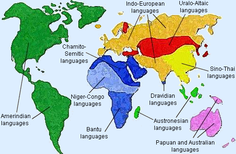|
|
There are many ways to learn a new language. The video summarizes the 7 most powerful ways we know to do that.
|
Why Foreign LanguageThere are multiple reasons for learning other languages. At the most basic level, you learn a secondary language to speak, read, write, and understand the language. Perhaps more importantly you learn other languages, and cultures, to understand and communicate with others. Language is the portal to other ways of seeing our world and the people that live in it. Only 20% of the world speaks English. Learning about others cultures and speaking, reading, and writing in other languages will allow you to interact with the other 80% of the world.
Your browser does not support viewing this document. Click here to download the document.
|
Language & CultureCulture is inextricably linked to language; that is to say, without language, culture cannot be completely acquired nor can it be effectively expressed and transmitted. And without culture, language cannot exist.
Language and culture are so interconnected that it is difficult to define the parameters of language and culture, and whether language impacts culture or vice-versa. |
Language FamiliesNearly everybody can communicate, and most do so through some form of language, and yet the question of where language came from is one of the most difficult questions in science. Psychologist and author, Michael Corballis explores the many theories of language's origins, including his own, and details how language and communication have continued to evolve, from primates' use of gestures, to the advent of communicative technologies.
Your browser does not support viewing this document. Click here to download the document.
|





